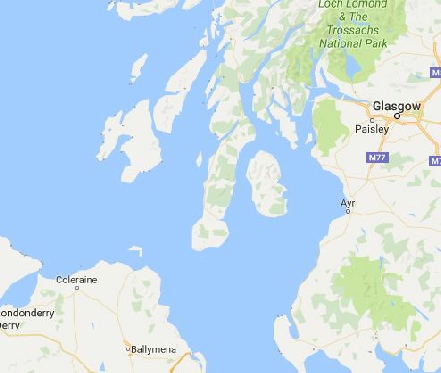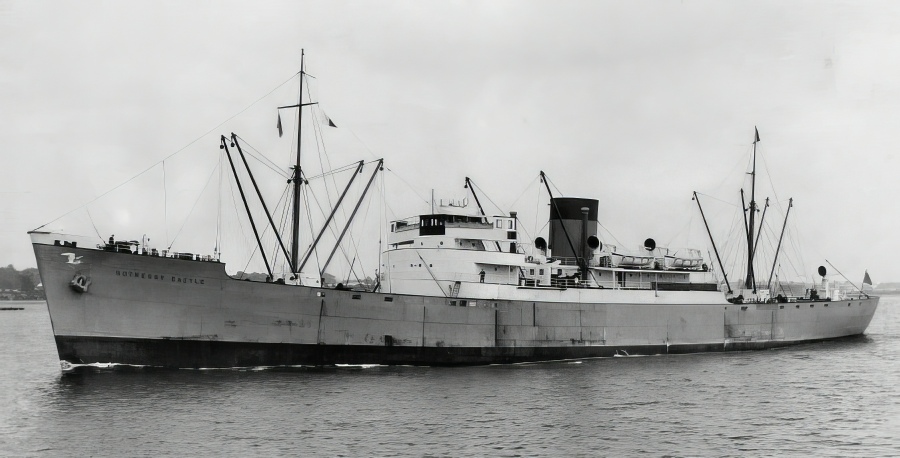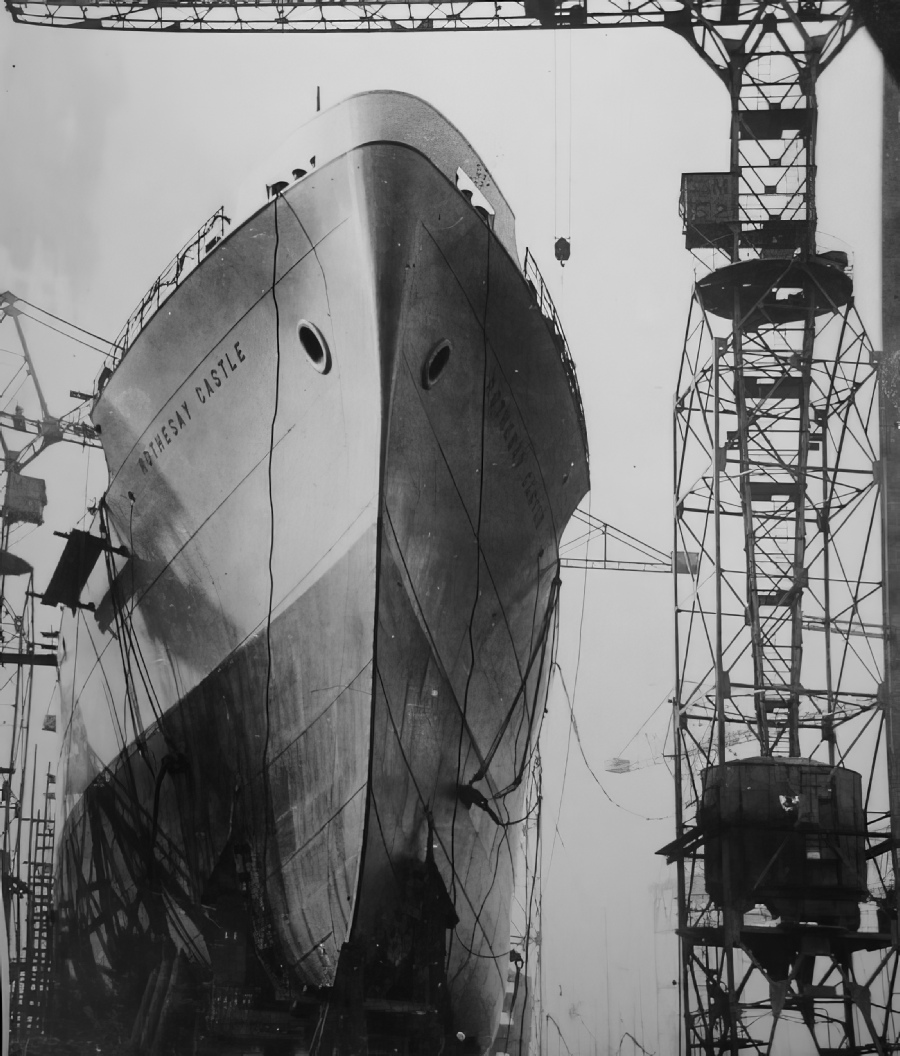Captain Furlong had served with the Union-Castle Mail Steamship Co. Ltd, for nearly 30 years. He had a clear record and had rendered good service. The Court has taken fully into consideration his record and reputation and has also fully recognised the difficulties and strain which War conditions impose upon those in charge of vessels. But the Court is of the opinion that in this case a valuable ship and cargo of food, both of vital importance to the Country, were needlessly thrown away by the Master's failure to exercise ordinary and reasonable care in the navigation of his vessel.
The conditions and necessities of war require the greatest care in navigation and make a failure to exercise care even more blameworthy than in normal times.
The main error in this case was, it would seem, an under estimation of the vessel's speed. But as the Master had himself ordered the engineers to keep to 90 revolutions so as to give a speed of 16½ knots and as the engines had exceeded these revolutions when conditions were adverse so as to maintain the speed, he was quite unjustified in working on the figures he did, even allowing for a zig-zagging course for part of the time. He failed to use the patent log and failed to have soundings taken. In explanation of the latter, he said it was unsafe to show a light and that a light was necessary. The Court is of opinion that adequate precautions to shield a dimmed light could readily have been taken and that there was no excuse for not taking soundings which would have revealed the vessel's danger before it was too late.
REPORT OF COURT.
In the matter of a Formal Investigation held at The Niblett Hall, Temple, London, on the 16th May 1940 and 7th, 8th, 15th days of June 1940 before F.A. Sellers, Esq., K.C., assisted by Captain P. de Legh and Commander J.R. Williams, R.D. into the circumstances attending the stranding of the motor vessel "ROTHESAY CASTLE" on the Island of Islay West Coast of Scotland on the 4th January, 1940.
The Court having carefully inquired into the circumstances attending the above-mentioned shipping casualty, finds for the reasons stated in the Annex hereto, that the cause of the stranding of the motor vessel "ROTHESAY CASTLE" was the serious default of the master, Captain Ernest William Hyde Furlong, in the navigation of his vessel and, so finding, the Court suspends the Master’s certificate of Competency No. O.C. 039858 for twelve months from the date of the stranding.
Dated this fifteenth day of June, 1940.
(SIGNED) FA. SELLERS,
Judge.
We (or I) concur in the above report.
(SIGNED) PIERS de LEGH. Assessor.
J.R. WILLIAMS Assessor.
QUESTIONS AND ANSWERS.
The Court's Answers to the Questions submitted by The Ministry of Shipping are as follows:-
1.Q. By whom was the M/V "ROTHESAY CASTLE" owned?
A. The "ROTHESAY CASTLE" was owned by the Union-Castle Mail Steamship Company Limited, of London.
2.Q. When the vessel left Glasgow on the 9th December, 1939 was she in good and seaworthy condition?
A. When the vessel left Glasgow on December 9th 1939, she was in good and seaworthy condition.
3.Q. Was the vessel fitted with (a) Wireless Telegraphy; (b) Wireless Telephony; and (c) Direction finding apparatus?
A. The vessel was fitted with Wireless Telegraphy and Direction finding apparatus but she was not equipped with Wireless Telephony.
4.Q. Was the vessel fitted with any and if so what sounding appliances? If so, were they in efficient working order when the vessel left (a) Glasgow on the 9th December, 1939, and (b) New York on the 27th December, 1939?
A. The vessel was fitted with the following sounding appliances:- Kelvin electric sounding machine Mark 4. Wigzells sounding machine with atmospheric sounding tube. 1 Deep Sea lead and line 28 lbs. 1 lead line 14 lbs. 2 lead lines 7 lbs. All were in efficient working order when the vessel left (a) Glasgow on December 9th 1939, (b) New York on December 27th 1939.
5.Q. Was the vessel fitted with one or more patent logs? if so, were they in efficient working order at the time when the vessel left (a) Glasgow on the 9th December 1939; and (b) New York on the 27th December 1939?
A. The vessel was fitted with 3 complete Walkers Cherub Mark 3 Patent Logs. They were in efficient working order when the vessel left Glasgow on December 9th 1939. But on leaving New York there was only one complete Walkers Cherub Mark 3 patent log. Two rotators had been lost on the outward voyage.
6.Q. With how many compasses was the vessel fitted? Where were they situated? When were they last professionally adjusted? Were they in efficient working order when the vessel left New York on the 27th December 1939? Were the correct deviations to be applied to them known to those on board throughout the voyage?
A. The vessel was fitted with three compasses. A Standard compass on the Wheelhouse. A Steering compass in the Wheelhouse and one compass aft. All compasses were in efficient working order when the vessel left New York. They were last professionally adjusted on 1st January 1936. Deviations were known and correctly applied.
7.Q. When the vessel left New York on the 27th December 1939, for where was she bound? Were any, and if so, what instructions concerning the voyage given to the Master by the Owners?
A. When the vessel left New York on December 27th she was bound for Glasgow. No special instructions were given by the owners when the vessel left New York, but general instructions were given by letter before the vessel left Glasgow on the outward voyage.
8.Q. When the vessel left New York on the 27th December 1939 was she and all her equipment in good and seaworthy condition.
A. When the vessel left New York on the 27th December 1939 she and all her equipment were in good seaworthy condition.
9.Q. When was the vessel's correct position last ascertained before the stranding? (a) in what manner was it ascertained; (b) by whom was it ascertained; and (c) what was it?
A. The vessel's correct position was ascertained at 4.50 p.m. on January 3rd 1940. (a)By Stellar Observation. (b)By the Chief Officer. (c)Position Lat. 54º 16' N. Long. 19º 35. W.
10.Q. At what speed or speeds did the vessel proceed on her course or courses from the time when her correct position was last ascertained?
A. From 4.50 p.m. on January 3rd vessel proceeded full speed ahead until she stranded.
11.Q. What courses were set after the correct position of the vessel was last ascertained? Were they set by the Master or in accordance with his instructions?
A. At 5 p.m. on January 3rd course was altered to 094º (compass) 105º. (true). At 7 a.m. on January 4th course was altered to 092º (compass) to make 075º (true). At 5 p.m., on January 4th course was altered to 100º (compass) 086º (true). According to the Master's evidence these courses were set by him.
12.Q. While the vessel was on her last voyage were any, and, if so what, soundings taken at any time? If not should they have been taken and when?
A. During the passage from New York to the time of casualty no soundings were taken. Soundings should have been taken on the 100 fathom Bank and as no observations were obtainable, soundings should have been taken there after at regular intervals.
13.Q. Were any and, if so, what lights seen by those on board shortly before the stranding?
A. No shore lights were seen by anyone on board. A white light apparently of a fishing vessel was sighted on the port side by the 3rd Officer at about 8.30 p.m.
14.Q. Was a good and proper lookout kept on board the vessel?
A. A good and proper lookout was kept on board the vessel.
15.Q. Was the vessel navigated in a proper and seamanlike manner?
A. The vessel was not navigated in a proper and seamanlike manner.
16.Q. When and where did the vessel strand?
A. The vessel stranded off Nawe Island Isle of Islay Latitude 55° 53¼ N. Longitude 6° 21½ W. at about 11.53 p.m. on Thursday, 4th January 1940.
17.Q. What was the cause of the stranding of the M/V "ROTHESAY CASTLE"?
A. The stranding was caused by the negligent navigation of the vessel.
18.Q. Was the stranding of the M/V "ROTHESAY CASTLE" caused or contributed by the wrongful act or default of her Master, Captain E.W.H. Furlong, and Chief Officer, Mr. G.W. Laurenson, or either, and, if so, which of them?
A. The stranding of the M/V "ROTHESAY CASTLE" was caused by the wrongful act or default of her Master, Captain E.W.H. Furlong. The Court is of opinion that the Chief Officer Mr. G.W. Laurenson might have been more careful in assisting the Master in the navigation of the vessel, particularly with the dead reckoning positions, but as the Master was in charge and responsible for the navigation the Court does not find fault in the Chief Officer causing or contributing to the stranding.
(SIGNED)
F.A. SELLERS,
Judge.
WE CONCUR:
(SIGNED)
PIERS de LEGH,
J.R. WILLIAMS.









